
The Enchanting Stockholm Archipelago
Discover the serene beauty of Stockholm Archipelago, a captivating blend of over 30,000 islands offering adventure, tranquility, and rich cultural heritage in the Baltic Sea.
The Stockholm Archipelago is a mesmerizing network of over 30,000 islands, islets, and skerries stretching from the city of Stockholm into the Baltic Sea. This natural wonder offers a unique mix of serene nature and quaint villages, providing a perfect escape from the hustle and bustle of city life. Visitors can explore the archipelago by boat, kayak, or even bicycle, hopping from one island to another and discovering hidden gems along the way. Each island has its own charm and character. For instance, Vaxholm is known as the gateway to the archipelago and boasts colorful wooden houses and a historic fortress. Sandhamn, on the other hand, is popular for its vibrant sailing culture and lively nightlife. Whether you’re looking to relax on sandy beaches, hike through verdant forests, or enjoy fresh seafood at a local restaurant, the Stockholm Archipelago caters to all tastes and preferences. Nature enthusiasts will find a haven here, with opportunities for bird watching, fishing, and swimming in crystal-clear waters. The archipelago is also rich in cultural heritage, with many islands home to ancient churches, museums, and art galleries. In the summer, the long daylight hours provide ample time for exploration, while winter transforms the archipelago into a snowy wonderland ideal for ice skating and cosy fireside evenings.
Local tips in Stockholm Archipelago
- Visit in summer for the best weather and longest days.
- Use the Waxholmsbolaget ferry service to navigate between islands.
- Pack a picnic and enjoy the scenic views from the many nature reserves.
- Bring swimwear for a refreshing dip in the Baltic Sea.
- Consider renting a kayak for a closer exploration of smaller islands and hidden coves.
- Don't miss the chance to try local seafood, especially the herring.
- Visit the Vaxholm Fortress Museum for a glimpse into the region's history.
- Dress in layers, as weather can change quickly.
The Enchanting Stockholm Archipelago
The Stockholm Archipelago is a mesmerizing network of over 30,000 islands, islets, and skerries stretching from the city of Stockholm into the Baltic Sea. This natural wonder offers a unique mix of serene nature and quaint villages, providing a perfect escape from the hustle and bustle of city life. Visitors can explore the archipelago by boat, kayak, or even bicycle, hopping from one island to another and discovering hidden gems along the way. Each island has its own charm and character. For instance, Vaxholm is known as the gateway to the archipelago and boasts colorful wooden houses and a historic fortress. Sandhamn, on the other hand, is popular for its vibrant sailing culture and lively nightlife. Whether you’re looking to relax on sandy beaches, hike through verdant forests, or enjoy fresh seafood at a local restaurant, the Stockholm Archipelago caters to all tastes and preferences. Nature enthusiasts will find a haven here, with opportunities for bird watching, fishing, and swimming in crystal-clear waters. The archipelago is also rich in cultural heritage, with many islands home to ancient churches, museums, and art galleries. In the summer, the long daylight hours provide ample time for exploration, while winter transforms the archipelago into a snowy wonderland ideal for ice skating and cosy fireside evenings.
When is the best time to go to Stockholm Archipelago?
Iconic landmarks you can’t miss
Vasa Museum
Explore the Vasa Museum in Stockholm, home to the stunning 17th-century warship Vasa, an extraordinary maritime treasure and a significant piece of history.
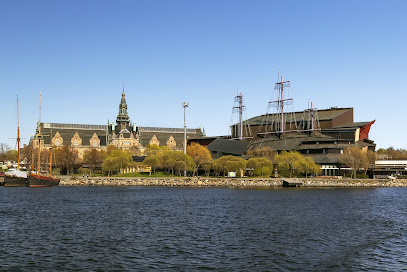
The Royal Palace
Explore the Royal Palace of Stockholm, a magnificent blend of history, art, and culture, reflecting Sweden's royal legacy and architectural beauty.

Skansen
Explore Skansen, Sweden's oldest open-air museum and zoo, showcasing history, culture, and native wildlife in a stunning natural setting.

Swedish History Museum
Discover Sweden's vibrant history through captivating exhibits and artifacts at the Swedish History Museum in Stockholm, a must-visit for all history lovers.

Stockholm Medieval Museum
Discover the fascinating history of Stockholm at the Medieval Museum, where the past comes alive through engaging exhibits and artifacts.

Tantolunden
Explore the beautiful expanses of Tantolunden Park, a serene escape in Stockholm with stunning views, recreational activities, and lush greenery.

Skinnarviksberget
Explore the breathtaking views and serene beauty of Skinnarviksberget, a must-visit scenic spot in Stockholm, perfect for nature lovers and photographers.

Artipelag
Discover the stunning Artipelag, where contemporary art meets the natural beauty of the Swedish archipelago in Gustavsberg.

Stockholm City Hall
Explore the architectural marvel of Stockholm City Hall, a cultural landmark hosting the Nobel Prize banquet with stunning views of the city.

(The Main Square)
Discover the charm of Stortorget, Stockholm's historic Main Square, featuring stunning architecture and vibrant cultural events in the heart of Gamla Stan.

Vaxholm Fortress
Explore Vaxholm Fortress, a historic landmark in Sweden's archipelago, offering stunning views, rich maritime history, and delightful dining experiences.
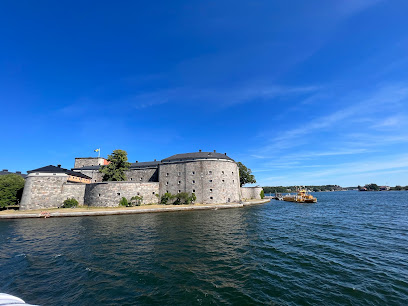
Stockholm's narrowest street (Mårten Trotzigs gränd)
Discover the enchanting Mårten Trotzigs Gränd, Stockholm's narrowest street, where history and charm unite in a captivating urban experience.
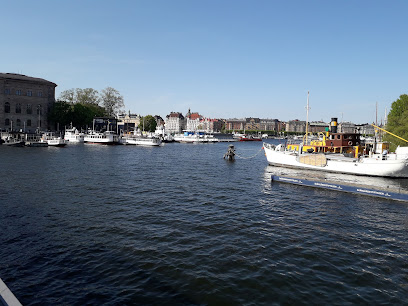
Swedish Centre for Architecture and Design
Explore the intersection of history, innovation, and design at the Swedish Centre for Architecture and Design in Stockholm.

Royal Djurgården
Discover the natural beauty and cultural richness of Royal Djurgården, Stockholm's premier national park and a UNESCO World Heritage Site.

Stora Nyckelviken
Discover the serene beauty and versatile event spaces of Stora Nyckelviken, a hidden gem in Nacka, Sweden, perfect for nature lovers and event planners.
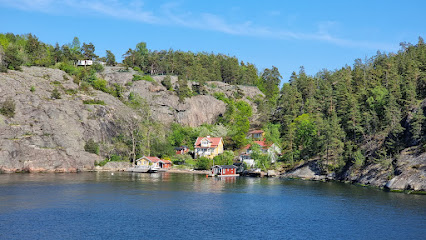
Unmissable attractions to see
Museum of Technology
Explore the Museum of Technology in Stockholm, a captivating journey through the evolution of science and innovation for all ages.

Junibacken
Discover a world of imagination at Junibacken, the enchanting children's museum in Stockholm celebrating timeless tales and beloved characters.

Humlegården
Explore the beauty and tranquility of Humlegården, an urban park in Stockholm filled with history, culture, and nature's splendor.

Skinnarviksberget
Explore Skinnarviksberget, Stockholm's scenic hill offering stunning city views, perfect for picnics, photography, and serene nature escapes.

Skansen Aquarium
Explore the vibrant world of Skansen Aquarium in Stockholm, a unique fusion of aquatic wonders and exotic wildlife in a stunning park setting.

Artipelag
Discover Artipelag: a stunning art gallery and restaurant on the waterfront, offering captivating exhibitions and delicious cuisine amidst breathtaking nature.

Skyview
Experience breathtaking panoramic views of Stockholm from Skyview, the iconic attraction atop Avicii Arena, and capture the city's beauty from new heights.

Medelhavsmuseet
Discover the rich history and culture of the Mediterranean at Stockholm's captivating Medelhavsmuseet, home to ancient artifacts and engaging exhibits.
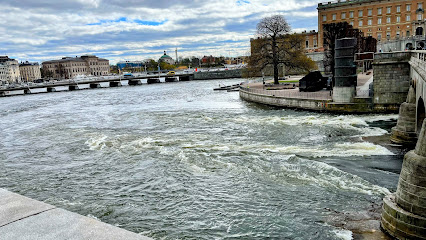
Storkyrkan
Explore Storkyrkan, Stockholm's historic cathedral, an architectural gem with stunning interiors and rich cultural significance in the heart of the city.

Prins Eugens Waldemarsudde
Explore the artistic treasures and serene landscapes at Prins Eugens Waldemarsudde, a must-visit museum in Stockholm celebrating Swedish art and culture.

Stockholm Stadium
Discover the historic Stockholm Stadium, an architectural gem and a vibrant sports venue in Sweden's capital, perfect for sports enthusiasts and cultural explorers.

Maritime Museum
Discover Sweden's rich maritime history at the Maritime Museum in Stockholm, where fascinating artifacts and engaging exhibits await every visitor.

Liljevalchs
Discover contemporary Swedish art in a vibrant museum set in the scenic Djurgården, an unmissable destination for art lovers in Stockholm.

Casino Cosmopol Stockholm
Discover the excitement of Casino Cosmopol Stockholm - the ultimate destination for gaming, dining, and unforgettable entertainment in the heart of Sweden.

Brunkeberg Tunnel
Explore the Brunkeberg Tunnel, Stockholm's historic underground passage and a cultural landmark connecting the city's vibrant districts.

Essential places to dine
Aifur
Experience authentic Scandinavian cuisine at Aifur in Stockholm—where tradition meets flavor in an unforgettable dining atmosphere.

Stockholms Gästabud
Experience authentic Swedish cuisine at Stockholms Gästabud - where tradition meets flavor in the heart of Stockholm.

Restaurant Tradition
Experience the heart of Swedish cuisine at Restaurant Tradition in Stockholm, where every dish tells a story of culture and heritage.

Rolfs Kök
Experience authentic Swedish cuisine at Rolfs Kök in Stockholm – where tradition meets modern culinary artistry.

Glashuset Restaurant & Bar
Experience exquisite Swedish cuisine at Glashuset Restaurant & Bar along Stockholm's scenic waterfront.

Sjätte Tunnan
Discover authentic Swedish cuisine at Sjätte Tunnan - where tradition meets modern dining in the heart of Stockholm.

Restaurang Kryp In
Experience authentic Swedish cuisine at Restaurang Kryp In, where tradition meets elegance in the heart of Stockholm.
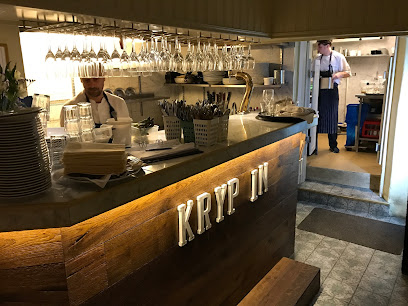
The Hairy Pig Restaurant
Discover the essence of Swedish gastronomy at The Hairy Pig Restaurant in Stockholm – where tradition meets flavor.

Restaurang J
Discover exquisite Swedish seafood dishes at Restaurang J in Nacka Strand - where tradition meets contemporary dining amidst beautiful waterfront views.

The Old Smokehouse
Discover culinary excellence at The Old Smokehouse in Saltsjö-Boo, where smoked delicacies meet stunning natural views.

DalaNisse
Experience authentic Swedish cuisine at DalaNisse in Stockholm, where tradition meets flavor in a cozy setting.
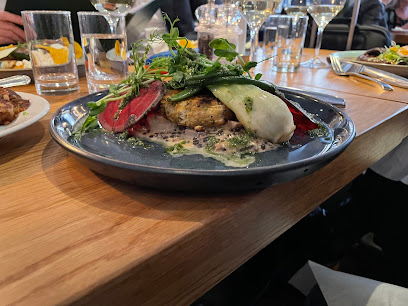
Fjäderholmarnas krog
Experience exquisite seafood dining at Fjäderholmarnas Krog on beautiful Fjäderholmen Island in Stockholm's archipelago.

Lilla Ego
Discover the art of Swedish fine dining at Lilla Ego in Stockholm - where tradition meets innovation in every dish.

Restaurang Slipen
Experience the best of Scandinavian cuisine at Restaurang Slipen in Stockholm, where tradition meets modern culinary excellence.

Fem små hus
Discover Fem Små Hus in Stockholm: A fine dining experience showcasing traditional Swedish cuisine amidst charming historic architecture.

Markets, malls and hidden boutiques
NK Stockholm
Discover the luxury and charm of NK Stockholm, a historic department store offering exclusive shopping and gourmet delights in the heart of the city.

Nordic Design
Explore Nordic Design in Stockholm: Your go-to spot for unique Scandinavian gifts, handicrafts, and art, embodying the spirit of the North.
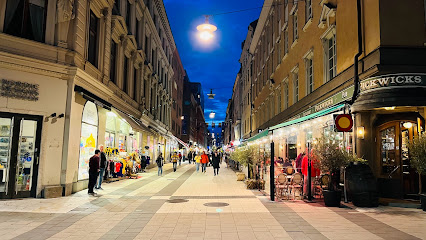
Punkt Shop
Explore Punkt Shop in Stockholm for a unique shopping experience filled with Swedish design and creativity.
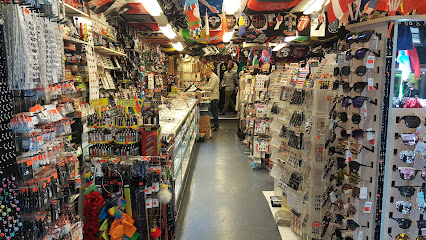
Swedish handicraft
Explore the finest Swedish craftsmanship at Swedish Handicraft, where tradition meets modern design in Stockholm's vibrant home goods store.

Stone Island Store Stockholm
Explore the stylish world of men's fashion at Stone Island Store in Stockholm, featuring innovative designs and high-quality clothing.

Style Council Souvenir Shop
Discover authentic Swedish souvenirs at the Style Council Souvenir Shop in Stockholm, where culture meets craftsmanship.

The Old Town Souvenir
Explore The Old Town Souvenir in Stockholm for unique Swedish gifts and authentic local treasures that capture the essence of Swedish culture.

Scottish House
Discover the essence of Scottish fashion at Scottish House in Stockholm, where tradition meets modern style in a vibrant shopping atmosphere.

Indus The Gift Shop
Discover unique Swedish treasures at Indus The Gift Shop, where every item tells a story and every visit is a delightful experience.

Snö of Sweden Concept Store
Explore Scandinavian elegance at Snö of Sweden Concept Store, where every piece of jewelry tells a story of craftsmanship and style.

Dala Shop
Discover authentic Swedish crafts at Dala Shop in Stockholm, featuring unique gifts and traditional Dala horses that embody the spirit of Sweden.

Different Things
Explore 'Different Things' in Stockholm for unique home goods that embody Scandinavian style and creativity.

Fartygsmagasinet i Stockholm AB
Discover a unique collection of antiques and collectibles at Fartygsmagasinet in Stockholm, a must-visit for history enthusiasts and treasure hunters.

Museum Shop, Nordiska Museet
Explore the Museum Shop at Nordiska Museet for unique gifts and souvenirs that embody the essence of Nordic culture and craftsmanship.

Nordlings Antik
Discover unique vintage furniture at Nordlings Antik, a hidden gem in Stockholm offering a rich selection of antique treasures.

Essential bars & hidden hideouts
Restaurant Akkurat - Södermalm
Discover the taste of Sweden at Akkurat, Södermalm's top gastropub, offering a delightful mix of traditional dishes and exceptional beers.

Pub Anchor
Discover the lively atmosphere of Pub Anchor in Stockholm, where eclectic decor meets a diverse drink selection in the heart of the city.

ICEBAR Stockholm by ICEHOTEL
Discover the enchanting ICEBAR Stockholm by ICEHOTEL, where captivating ice sculptures and exquisite cocktails create an unforgettable experience in Sweden's capital.

Wirströms Pub
Discover the vibrant atmosphere of Wirströms Pub, an Irish gem in Stockholm, featuring live music, sports, and delicious pub fare.

Stampen
Experience the lively spirit of Stockholm at Stampen, a premier live music bar offering delicious food and unforgettable entertainment.

Miss Behave Bar
Experience a vibrant American brewpub atmosphere at Miss Behave Bar, where gourmet burgers and crafted cocktails await in the heart of Lidingö.
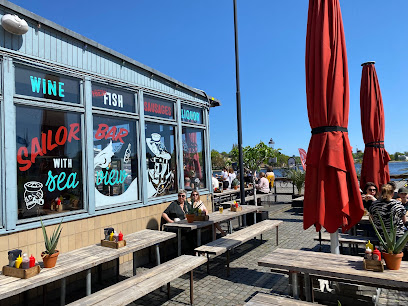
Pharmarium
Experience the art of mixology at Pharmarium, Stockholm's premier cocktail bar, where creativity meets tradition in every sip.

The Secret Garden
Experience the vibrant nightlife and inclusive atmosphere at The Secret Garden, Stockholm's premier gay bar and event venue.

A bar called Gemma
Discover exceptional craft cocktails in a stylish atmosphere at A Bar Called Gemma, a must-visit spot in Stockholm's vibrant nightlife.

The International Bar
Experience the vibrant nightlife of Stockholm at The International Bar, where affordability meets a lively atmosphere and diverse drink offerings.

MELT
Experience Stockholm's vibrant nightlife at MELT, a cocktail bar with live music and expertly crafted drinks in a lively atmosphere.

Erlands
Discover the exquisite cocktails and vibrant jazz atmosphere at Erlands, one of Stockholm's premier cocktail bars and jazz clubs.

Cadierbaren
Discover Cadierbaren: Stockholm's premier cocktail bar offering exquisite drinks and stunning waterfront views in a luxurious setting.
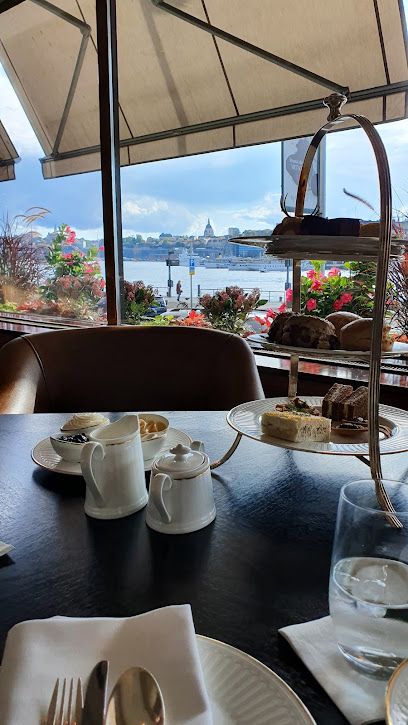
Stockholm Under Stjärnorna
Discover vibrant nightlife at Stockholm Under Stjärnorna, a bar that offers a unique blend of local flavors and a cozy atmosphere in the heart of the city.

The Old Brewer - Public House & Dining Room
Experience the best of Stockholm's gastropub culture at The Old Brewer, where modern European cuisine meets a lively pub atmosphere.

Local Phrases about Stockholm Archipelago
-
- HelloHej
[hey] - GoodbyeHejdå
[hey-doh] - YesJa
[yah] - NoNej
[ney] - Please/You're welcomeSnälla
[snell-ah] - Thank youTack
[tahck] - Excuse me/SorryUrsäkta
[ur-sehk-tah] - How are you?Hur mår du?
[hoor mor doo] - Fine. And you?Bra. Och du?
[bra ohsh doo] - Do you speak English?Talar du engelska?
[tah-lar doo eng-els-kah] - I don't understandJag förstår inte
[yahg fur-stor in-teh]
- HelloHej
-
- I'd like to see the menu, pleaseJag skulle vilja se menyn, tack
[yahg skool-leh vil-yah seh menn-uhn, tahck] - I don't eat meatJag äter inte kött
[yahg ay-ter in-teh shøt] - Cheers!Skål!
[skohl] - I would like to pay, pleaseJag skulle vilja betala, tack
[yahg skool-leh vil-yah beh-tah-lah, tahck]
- I'd like to see the menu, pleaseJag skulle vilja se menyn, tack
-
- Help!Hjälp!
[yelp] - Go away!Gå bort!
[goh bohrt] - Call the Police!Ring polisen!
[ring po-lee-sen] - Call a doctor!Ring en läkare!
[ring en leh-kah-reh] - I'm lostJag är vilse
[yahg er vil-seh] - I'm illJag är sjuk
[yahg er shoohk]
- Help!Hjälp!
-
- I'd like to buy...Jag skulle vilja köpa...
[yahg skool-leh vil-yah shø-pah] - I'm just lookingJag tittar bara
[yahg tit-tar bah-rah] - How much is it?Hur mycket kostar det?
[hoor myk-ket koh-star deht] - That's too expensiveDet är för dyrt
[deht er fur deert] - Can you lower the price?Kan du sänka priset?
[kan doo sen-kah prees-et]
- I'd like to buy...Jag skulle vilja köpa...
-
- What time is it?Vad är klockan?
[vahd er klohk-ahn] - It's one o'clockKlockan är ett
[klohk-ahn er ayt] - Half past (10)Halv tio
[hahlv tee-oh] - MorningMorgon
[mor-gohn] - AfternoonEftermiddag
[ef-ter-meed-dahg] - EveningKväll
[kvel] - YesterdayIgår
[ee-gohr] - TodayIdag
[ee-dahg] - TomorrowImorgon
[ee-mor-gohn] - 1Ett
[aht] - 2Två
[tvoh] - 3Tre
[treh] - 4Fyra
[fy-rah] - 5Fem
[fehm] - 6Sex
[sehx] - 7Sju
[s-yoo] - 8Åtta
[ot-tah] - 9Nio
[nee-oh] - 10Tio
[tee-oh]
- What time is it?Vad är klockan?
-
- Where's a/the...?Var finns en/den...?
[var feens en/dehn] - What's the address?Vad är adressen?
[vahd er ah-dress-en] - Can you show me (on the map)?Kan du visa mig (på kartan)?
[kan doo vee-sah meeh (poh kahr-tahn)] - When's the next (bus)?När går nästa (buss)?
[nahr gohr nehk-stah (boos)] - A ticket (to ....)En biljett (till ....)
[en bil-yet (teel)]
- Where's a/the...?Var finns en/den...?
History of Stockholm Archipelago
-
The Stockholm Archipelago's history can be traced back to the Viking Age. During this period, the islands served as crucial points for trade and exploration. Evidence of Viking settlements, including burial mounds and rune stones, can be found on various islands, highlighting the area's significance during this era.
-
In the medieval period, the Stockholm Archipelago became an important maritime hub. The islands played a vital role in the Hanseatic League's trade network, connecting Stockholm to other significant Baltic Sea ports. The establishment of fishing communities and the construction of medieval churches on the islands further emphasize their importance during this time.
-
Throughout history, the Stockholm Archipelago has held strategic military importance. During the 17th and 18th centuries, Sweden fortified several islands to protect Stockholm from maritime threats. Notable fortifications include Vaxholm Fortress, constructed in the 16th century, and Siaröfortet, built in the early 20th century as part of Sweden's coastal defense system.
-
The advent of steamships in the 19th century revolutionized transportation in the Stockholm Archipelago. Steamship lines connected the islands to Stockholm, facilitating trade, communication, and tourism. This era saw the construction of grand villas and summer homes by Stockholm's elite, transforming the archipelago into a popular retreat.
-
The Stockholm Archipelago has long been a source of inspiration for artists and writers. In the late 19th and early 20th centuries, the islands attracted prominent figures such as painter Anders Zorn and author August Strindberg. Their works, capturing the archipelago's natural beauty and serene lifestyle, significantly contributed to Sweden's cultural heritage.
-
In recent decades, there has been a growing emphasis on preserving the natural beauty and ecological integrity of the Stockholm Archipelago. Various conservation initiatives aim to protect the unique flora and fauna, as well as the cultural heritage of the islands. The archipelago is now a popular destination for eco-tourism, offering visitors a chance to experience its pristine landscapes and rich history.
Stockholm Archipelago Essentials
-
The Stockholm Archipelago is easily accessible from Stockholm, the capital of Sweden. The nearest international airport is Stockholm Arlanda Airport, approximately 40 kilometers north of Stockholm. From the airport, you can take a taxi, airport shuttle, or the Arlanda Express train to Stockholm Central Station. From Stockholm, you can reach the archipelago by ferry, boat taxi, or private boat. Several ferry lines, such as Waxholmsbolaget and Cinderellabåtarna, operate regular services to the various islands.
-
Once in the Stockholm Archipelago, transportation between islands can be managed via ferries, boat taxis, and private boats. Waxholmsbolaget and Cinderellabåtarna provide extensive ferry services connecting the major islands. It is also possible to rent bikes on many islands, offering a scenic way to explore. Some islands have limited car access, so it's advisable to check transportation options in advance. For short distances, walking is a pleasant and practical way to get around.
-
The official currency in Sweden is the Swedish Krona (SEK). Credit and debit cards are widely accepted throughout the Stockholm Archipelago, including in restaurants, shops, and on ferries. It's a good idea to carry some cash for smaller purchases or in case you visit more remote islands where card acceptance might be limited. ATMs are available on some of the larger islands, but it is advisable to withdraw sufficient cash before heading to smaller islands.
-
The Stockholm Archipelago is generally safe for tourists, with low crime rates. However, it is always advisable to take standard precautions such as keeping an eye on your belongings, especially in crowded areas or on public transport. There are no specific high-crime areas targeting tourists. Always follow local guidelines and respect nature to avoid accidents, especially when engaging in outdoor activities such as hiking or boating.
-
In case of emergency, dial 112 for immediate assistance, which is the emergency number in Sweden for police, fire, and medical services. Medical facilities are available on larger islands, while smaller islands may have limited medical services. It is recommended to have travel insurance that covers medical emergencies. Familiarize yourself with the location of the nearest hospital or clinic on the island you are visiting.
-
Fashion: Do dress in layers, as weather can change quickly. Waterproof clothing is advisable. Avoid wearing overly formal attire; casual and comfortable clothing is preferred. Religion: Do respect local customs and traditions. Sweden is predominantly secular, but respect any religious sites you may visit. Public Transport: Do be punctual for ferry schedules and respect the queue. Don’t play loud music or disturb other passengers. Greetings: Do greet people with a friendly 'Hej' (hello). A handshake is common in formal settings. Eating & Drinking: Do try local seafood delicacies. Don’t leave food waste behind, as it can attract wildlife and spoil the natural beauty.
-
To experience the Stockholm Archipelago like a local, consider visiting during the midsummer celebration in June, a major Swedish holiday. Engage with locals at small cafes and restaurants, and don’t hesitate to ask for recommendations. Explore lesser-known islands for a more secluded experience. Use the archipelago’s extensive network of hiking trails to discover stunning views and hidden spots. Renting a kayak or canoe is a fantastic way to explore the waterways between islands.
Trending Landmarks in Stockholm Archipelago
-
Vasa Museum
-
The Royal Palace
-
Skansen
-
Swedish History Museum
-
Stockholm Medieval Museum
-
Tantolunden
-
Skinnarviksberget
-
Artipelag
-
Stockholm City Hall
-
(The Main Square)
-
Vaxholm Fortress
-
Stockholm's narrowest street (Mårten Trotzigs gränd)
-
Swedish Centre for Architecture and Design
-
Royal Djurgården
-
Stora Nyckelviken
Nearby Cities to Stockholm Archipelago
-
Things To Do in Uppsala
-
Things To Do in Västerås
-
Things To Do in Norrköping
-
Things To Do in Örebro
-
Things To Do in Linköping
-
Things To Do in Visby
-
Things To Do in Karlstad
-
Things To Do in Turku
-
Things To Do in Kärdla
-
Things To Do in Kuressaare
-
Things To Do in Jönköping
-
Things To Do in Ventspils
-
Things To Do in Kalmar
-
Things To Do in Haapsalu
-
Things To Do in Kuldiga













